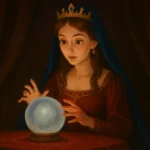Carle Classic: The Very Hungry Caterpillar
The phrase “Carle Classic” doesn’t refer to a sports or charity event at all, but rather to a beloved children’s book by Eric Carle. In fact, “Carle Classic” was used as a cryptic clue in a word puzzle, where it pointed to Eric Carle’s famous picture book The Very Hungry Caterpillar. Eric Carle’s 1969 book tells the story of a tiny caterpillar that hatches from an egg and voraciously eats its way through the days of the week, ultimately becoming a beautiful butterfly. This simple, colorful tale is one of Carle’s best-known works and has become a classic of children’s literature.
Origins and Background
Eric Carle, a New York illustrator and designer of German descent, created The Very Hungry Caterpillar in 1969. According to Carle and contemporary accounts, he conceived the idea playfully one day by punching holes in a stack of paper – the holes later inspired the iconic design of the book’s pages. Carle was not originally thinking of a children’s story, but this experiment became the basis for a picture book about a caterpillar’s journey. The Very Hungry Caterpillar was first published on March 20, 1969. Since then it has been reprinted in countless editions and translations. Interestingly, some informal sources have even mistaken “Carle Classic” for a golf tournament, but no reliable evidence supports that; all credible references tie Carle Classic to Eric Carle’s work, not an athletic event.
The book itself is short – just 22 pages – but it is notable for its innovative format. Each page has a hole (or series of holes) through which the caterpillar has “eaten” the food, creating an interactive experience for young readers. As Eric Carle’s official site notes, the story follows the hungry caterpillar as it grows from egg to cocoon to beautiful butterfly, while teaching the days of the week, counting, basic nutrition and the life cycle of a butterfly. For example, on Monday the caterpillar eats one apple, on Tuesday two pears, continuing with increasing fruits through Friday, and then overindulges on Saturday with treats like cake and candy before recovering on Sunday with a green leaf. This cumulative storyline introduces vocabulary (names of foods, numbers, days) and a simple narrative of growth and transformation.
Story and Format
The Very Hungry Caterpillar is often celebrated for its engaging storytelling and design. The narrative is told in straightforward language suitable for very young children, but it works on multiple levels. As The Atlantic explains, the caterpillar’s journey “was released 50 years ago” and shows him eating “vibrantly colored fruits… from Monday to Friday, [then] a junk-food-eating rampage on Saturday, [finishing] with a nice green leaf on Sunday, and then nestl[ing] into a cocoon” before emerging as a butterfly. Through this story, children learn not only about different foods and colors, but also important concepts like counting (one apple, two pears, etc.), days of the week, and biological metamorphosis (egg → caterpillar → butterfly). Teachers and librarians often praise the book for “effortless fusion of story and educational concepts”.
The book’s artwork is equally famous. Eric Carle used hand-painted tissue paper collages, giving the images a bright, textured look. The cut-out holes in the pages (showing where the caterpillar has eaten) were an unprecedented gimmick in 1969 and helped turn the book “into a toy” for young readers. The Guardian notes that the design of The Very Hungry Caterpillar was revolutionary: by punching holes in the pages, Carle transformed the story into an interactive experience. This creative format was seen as an “exciting breakthrough in the traditional children’s book format”.
Popularity and Impact
The Very Hungry Caterpillar has had a tremendous cultural impact since its publication. It quickly became a bestseller and, over the decades, has sold tens of millions of copies worldwide. According to multiple sources, the book has been translated into over 60 languages and sold more than 50 million copies. The Eric Carle official biography highlights that Carle’s masterpiece has “eaten its way into the hearts of literally millions of children all over the world” and notes the 50 million copies and 66 languages figure. The Atlantic similarly reports that “in the years since, it has sold almost 50 million copies… in more than 62 languages”. These figures make it one of the best-selling and most-translated children’s books ever.
Critics and educators have repeatedly hailed the book as a modern classic. The Guardian called it “one of the greatest childhood classics of all time” on its 35th anniversary. Others have described it as a “pillar of children’s culture,” comparing its status to that of a Beatles album in music. Its simple but profound narrative has earned numerous awards and honors. For example, it was selected as one of the “Ten Best Picture Books of the Year” in 1969 and later ranked highly on national polls of favorite books. The innovative artwork has been widely praised (e.g. “gorgeously illustrated, brilliantly innovative” according to The New York Times) and the story itself is often credited with expanding what a picture book could do for learning and play.
Over the decades, The Very Hungry Caterpillar has inspired a wide range of related products and adaptations. There are board books, pop-up editions, animated adaptations (including a television special and web series), and merchandise ranging from toys to fabrics. The success of Caterpillar helped establish Eric Carle as a leading picture-book author; to date he has written and illustrated over 70 books, collectively selling 150+ million copies. Many of Carle’s other works (like Brown Bear, Brown Bear, What Do You See? and The Grouchy Ladybug) are also considered classics, but none has matched the universal fame of the hungry caterpillar.
Celebrations and Engagement
Fans of the book celebrate The Very Hungry Caterpillar in many ways. In particular, March 20th has become known as “Very Hungry Caterpillar Day” (falling on the book’s publication date and the first day of spring). Publishers and educators promote special activities on this day – for example, Penguin Random House encourages families to join “a very special picnic celebration with your favorite Caterpillar,” complete with free coloring pages and party kits. Schools and libraries often hold themed storytimes, crafts and games on Caterpillar Day. Indeed, Eric Carle’s own museum and foundation have run events celebrating the book’s anniversaries.
The Eric Carle Museum of Picture Book Art in Amherst, Massachusetts – founded by Carle in 2002 – is another way people can get involved. The museum exhibits Carle’s original artwork and hosts interactive workshops, story hours and art activities for children. For instance, visitors can create their own collages, attend Caterpillar-themed story hours in the museum’s library, and see rotating exhibits that often feature Carle’s most famous books. Outside the museum, families celebrate by reading The Very Hungry Caterpillar together, enjoying caterpillar-shaped snacks, or even planting a butterfly garden to observe caterpillars transforming – bringing Carle’s butterfly theme into real life.
In classrooms and homes around the world, the book is used as a springboard for learning. Teachers leverage it to teach literacy (story sequencing and reading aloud), numeracy (counting the foods), nutrition (healthy vs. unhealthy eating habits), and science (the butterfly life cycle). The story’s warm message about growth and change also resonates emotionally with young readers. Because of its universal appeal, parents often introduce The Very Hungry Caterpillar to their children at an early age, making it a shared family experience across generations.
Significance of the “Carle Classic”
In summary, “Carle Classic” is best understood not as a sporting event but as a nod to Eric Carle’s most enduring work, The Very Hungry Caterpillar. It epitomizes Carle’s innovative style of picture books – combining storytelling, teaching, and play. This “classic” book has left an indelible mark on children’s culture: it continues to sell strongly decades after its debut, and it regularly appears on lists of the greatest children’s books. Its significance lies in its ability to engage very young readers with bold art and a fun narrative, while quietly imparting educational lessons. Whether through a word puzzle clue or a preschool storytime, “Carle Classic” ultimately celebrates a tale that remains as charming, vibrant, and beloved today as it was when Eric Carle first created it.
Sources: Eric Carle’s official site and biography, The Atlantic and The Guardian articles on The Very Hungry Caterpillar, and a DotEsports explanation linking “Carle Classic” to Carle’s bookdotesports.com (among other educational and publishing sources). These confirm that “Carle Classic” refers to Eric Carle’s famous children’s book and its legacy, rather than an event.












